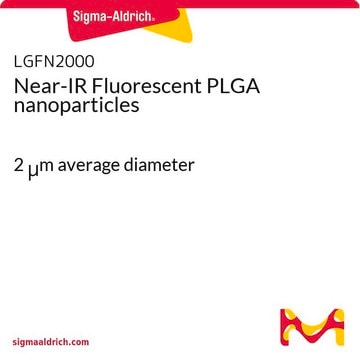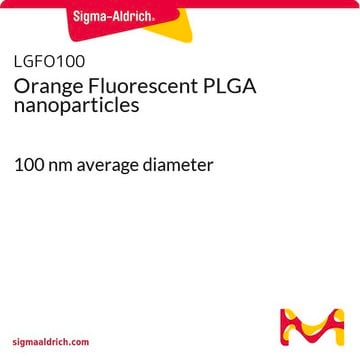推薦產品
應用
Carboxylic acid-poly(ethylene glycol)-b-poly(ε-caprolactone) is a functionalized, amphiphilic, diblock copolymer composed of a hydrophilic PEG block and a hydrophobic PCL block. These biodegradable, biocompatible polymers can self-assemble to form nanoparticles, such as micelles and polymersomes, in both aqueous and non-aqueous media. Due to these properties, these polymers are widely used in polymeric nanoparticle formulation to achieve controlled and targeted delivery of therapeutic agents (e.g. APIs, genetic material, peptides, vaccines, and antibiotics). Additionally, well-defined nanoparticles with tunable size and properties can be prepared by altering the molecular weight ratios between hydrophilic and hydrophobic blocks, as well as by controlling formulation parameters. The carboxylic acid functional group on the PEG chain enables rapid and facile surface functionalization, allowing for these materials to be used in applications such as targeted drug delivery.
儲存類別代碼
11 - Combustible Solids
水污染物質分類(WGK)
WGK 3
閃點(°F)
Not applicable
閃點(°C)
Not applicable
Jian Jin et al.
PloS one, 9(11), e112200-e112200 (2014-11-12)
In this content, a small molecular ligand of prostate specific membrane antigen (SMLP) conjugated poly (caprolactone) (PCL)-b-poly (ethylene glycol) (PEG) copolymers with different block lengths were synthesized to construct a satisfactory drug delivery system. Four different docetaxel-loaded polymeric micelles (DTX-PMs)
Cem Varan et al.
Beilstein journal of nanotechnology, 8, 1446-1456 (2017-09-14)
Background: Brain tumors are the most common tumors among adolescents. Although some chemotherapeutics are known to be effective against brain tumors based on cell culture studies, the same effect is not observed in clinical trials. For this reason, the development
我們的科學家團隊在所有研究領域都有豐富的經驗,包括生命科學、材料科學、化學合成、色譜、分析等.
聯絡技術服務








